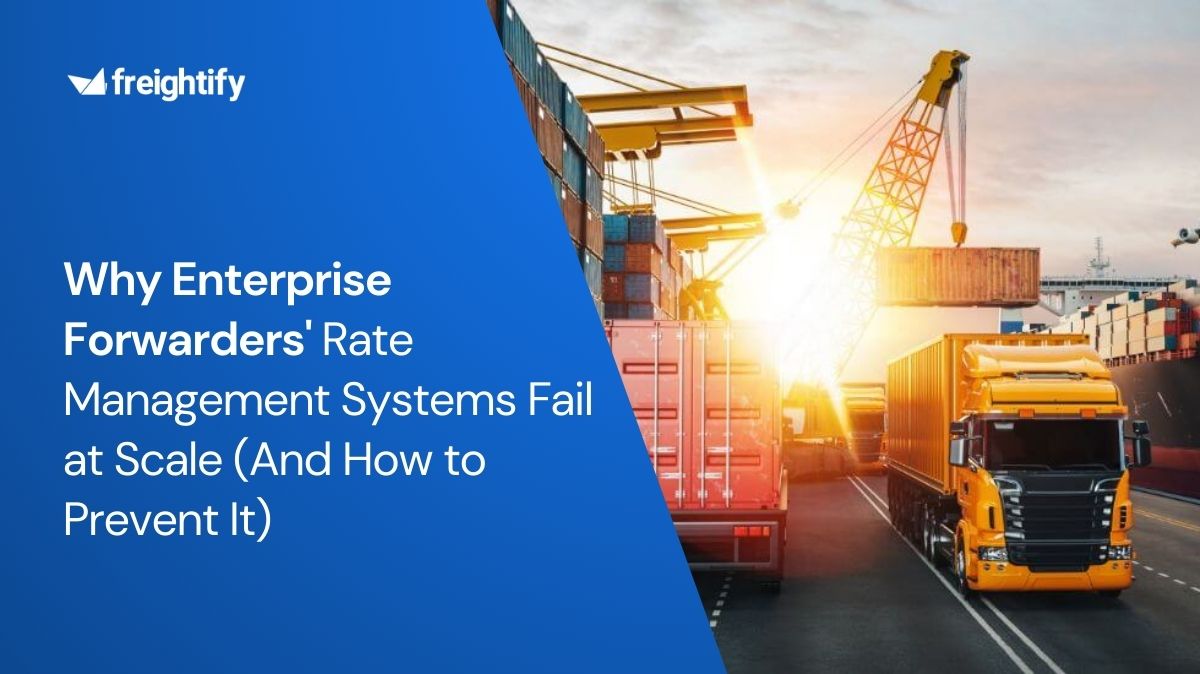One of the most effective ways to grow your business rapidly is by expanding to international markets. But despite the lucrativeness and efficacy of this WAY, many freight forwarders refrain from engaging in cross-border trades.
Why? Because international shipping is not easy and is nothing like domestic shipping. Cultural and language barriers aside, you have to navigate the complex web of customs regulations. Failure to comply with these regulations can result in costly fines, shipment delays, and damage to business reputation.
To help you navigate the challenges posed by customs regulation, we have come up with 5 simple tips that will help you ship your goods without any hassles.
Let us help you with your journey
Your One Stop Solution to Manage Spot, Contract rates & Margins!
Navigating Customs Regulation: 5 Handy Tips for Shippers and Freight Forwarders Tip #1: Keep Abreast of Regulatory Changes Given the dynamic nature of global trade, it is quite expected that customs regulations undergo constant evolution. Rules, tariff schedules, and duty rates can change in the blink of an eye and can take even an experienced exporter by surprise.
But that doesn’t mean you can’t do anything about it. For starters, you can try to stay informed and keep track of changes in customs regulations by subscribing to industry newsletters or monitoring trade websites. You can gather all the latest customs information and news from the following websites for different countries-
You can also participate in customs-related webinars and conferences. For instance, the US Customs and Border Protection website regularly publishes a list of webinars on customs regulations and cross-border trades.
Tip #2: Provide Accurate & Correct Documentation This is a given. To ensure the smooth passage of your shipments through customs in any country, you MUST provide accurate and complete information. The efficiency and success of your international shipping hinges on the accuracy of information because it allows customs agents to perform their duties swiftly, minimizing or eliminating delays.
The requirements of the documentation vary based on the country you are exporting the goods to. But as a bare minimum, you might be asked to submit the following documents to the customs officer at the destination country -
Commercial invoice: This should contain vital information about the goods being shipped, including details such as item value, weight, and dimensions.Bill of lading: This will serve as both a receipt of shipment and a contractual agreement between the freight shippers and the carriers.Packing List: This outlines the detailed inventory of items included in the shipment.Certificate Of Origin: This certifies the origin of goods and is used to determine the eligibility for preferential tariff rates or to comply with trade agreements.Unfortunately, most stakeholders involved in shipment handle these documents manually. This increases the chances of human errors, such as data entry mistakes, omissions, or misinterpretations. Inconsistencies in paperwork can lead to customs rejections, delays, and potential fines.
This is where Freightify can help. You can easily manage and gain instant access to relevant documents specific to a shipment. This ensures that there is no delay at the customs and your goods reach safely at the destination.
Tip #3: Expertise of a Freight Forwarder Freight forwarders are well-versed in the intricacies of customs regulations and documentation requirements. They ensure that shipments comply with the specific rules of each country, reducing the risk of delays or customs-related issues. From commercial invoices and packing lists to certificates of origin, they ensure that all paperwork is accurate, complete, and in compliance with customs regulations.
They seamlessly liaise with customs officials, submitting the necessary documentation and ensuring that all clearance procedures are followed meticulously. Freight forwarders even assist in the accurate determination of customs duties and taxes applicable to shipments. Their expertise in tariff classifications and valuation methods helps in avoiding overpayment and ensures adherence to customs requirements.
CTC Logistics, GoForward, Maurice Ward, and Uneek are some of the popular freight forwarders at the global level. All these freight forwarders have partnered with Freightify to digitize most of their cargo freight operations, including customs-related processes.
Tip #4: Know all the key terms related to customs There are certain terms related to customs regulations that you need to know at all costs if you are planning to ship abroad. A better understanding of these terms will help you operate with confidence and efficiency in the dynamic world of cross-border commerce. Here are some of these terms:
Duties and Tariffs: Taxes imposed by governments on imported and, in some cases, exported goods. Duties and tariffs are calculated based on the value, quantity, weight, or other factors of the goods.Harmonized System (HS) Code: A standardized system for classifying goods internationally. Each product is assigned a unique HS code, which is used for customs declarations and determines the applicable duties and taxes.Incoterms (International Commercial Terms): Standardized terms defining the responsibilities of buyers and sellers in international trade. Incoterms specify who is responsible for transportation, insurance, customs clearance, and other aspects of the transaction.Bill of Lading (BOL): A document issued by a carrier to acknowledge receipt of goods for shipment. It serves as a contract of carriage and a receipt for the goods.Free Trade Agreement (FTA): An agreement between two or more countries to facilitate trade by reducing or eliminating tariffs and other barriers on goods traded between them.Drawback: A customs program that allows businesses to receive a refund of duties paid on imported goods that are subsequently exported.Tip #5: Pack and Label Properly Proper packing and labeling help customs officials easily identify and classify goods. Clear labeling ensures that the contents of a shipment are accurately described, facilitating correct tariff classification and reducing the risk of delays due to misinterpretation.
Different countries have specific regulations regarding the packaging and labeling of goods. Customs authorities may require certain information, such as country of origin, product composition, or safety instructions, to be clearly labeled on packaging.
Also, the labeling and packaging requirements might vary based on the type of products you are shipping. For example, if you are shipping food products from India to the US, you need to include the following details in the label for customs clearance:
Name of food/product Country of origin for the product Ingredients Nutritional information English language labeling Food allergens Any chemicals/food additives used Parting Thoughts For companies venturing into the global market, the significance of customs compliance cannot be overstated, as it helps avoid shipment delays, minimize costs, and build a reputation for reliability.
To further empower you in this endeavor, innovative solutions like Freightify come into the picture. It simplifies the complexities of logistics and customs processes by offering a myriad of freight management solutions.







.png)








.png)



